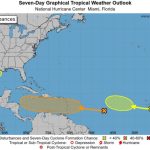Poverty does not relent in times of prosperity in the Dominican Republic.

Inequality limits economic growth and affects society as a whole
Santo Domingo.- In the DR economy, some mechanisms hinder income distribution during boom times, and the wealthiest 1% concentrates the wealth. Social inequality has become structural in the Dominican economy, affirms Rosa Cañete Alonso in a special publication by the Dominican Academy of Sciences with works of thirteen economists on different topics.
She points out that in the Dominican economy, there are mechanisms that hinder the distribution of income during times of prosperity, to the point that in some years, the GDP grows, and poverty also grows.
This has made the Dominican Republic the number one among the countries of Latin America and the Caribbean, where the wealthiest 1% concentrates most of the national income, and it is also the third in the world, only behind Mozambique and the Central African Republic.
The economist reveals that an analysis of elasticities showed that if inequality in the country had been reduced at the same levels at which income increased from 2016 to 2021, the decrease in monetary poverty would have been at least double that observed in 2021.
That is, it would have been reduced by 9.5 percentage points instead of 4.8 percentage points.
In contrast, a 10% increase in household income would reduce poverty by 19.7%, and a 10% reduction in inequality would result in a 27% reduction in poverty.
Inequality limits economic growth and affects society as a whole. The International Monetary Fund (IMF) calculates in a sample of 156 countries that if the percentage of total income received by people with low incomes and the middle class increases, the economy grows. On the other hand, if the percentage of income captured by the wealthiest increases, the economy of that country shrinks.
He also states that a simple regression analysis based on quarterly data from the Continuous National Labor Force Survey (ENCFT) indicates that in the Dominican Republic if the share of income received by the poorest population (quintile 1) in the Dominican Republic increases, the national average household income also increases. If only the share of income received by the richest (quintile 5) increases, the average income would decrease, although in this case, with a very low statistical significance.

















Maybe so but the country itself isn’t really doing anything to combat the wealth gap. It’s just more pronounced in DR. But in the end, those who do have will always keep those that don’t have in order to maintain their positions in the economic scale. It is what it is.
yes i agree with you and in reallity is more easy for those in power to keep good relations with the families that choose who will be in power
Practical Vocational education and ethics may go a long way.
Honesty and hard work
BS, the game is rigged.